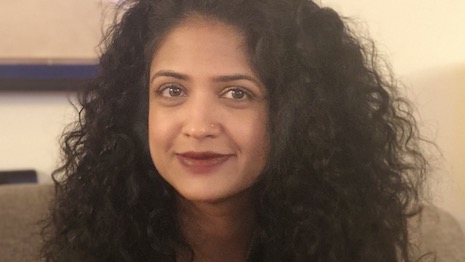By Nayani Vivekaandamorthy
A compelling campaign used to be enough. That was back when brands could get by on surface-level marketing efforts and customer promotions. But those days are over.
Now, consumers expect more social responsibility from brands. In some cases, they are even willing to pay for it.
Today’s consumers view the brands they support as extensions of themselves. They appreciate those brands that choose to stand for something – better yet, some things – in the context of social responsibility while also championing all-important factors such as diversity and inclusion.
People today want to see the diversity in advertising that they see in their day-to-day lives. They want to see diverse representation in leadership positions. They want to know that brands constantly consider and explore the various perspectives and values they see reflected in their worlds.
Meeting customer needs
Some brands get it, and they are demonstrating their commitment to diversity in their offerings and their messaging.
While perhaps best known for the stereotypically feminine Barbie doll, Mattel recently launched a new line of gender-neutral, makeup-free Creatable World dolls for children who identify as transgender or nonbinary.
Cosmetics company Ulta is putting a huge focus on diversity – not just in how it goes to market and its campaigns, but also in its brand identity and value.
Ulta champions diversity, which you can see in the composition of its teams that reflect the community.
The company further promotes diversity and inclusion with programs to support employees with different backgrounds and needs, such as increasing short-term disability pay from 60 percent to 80 percent and offering tuition reimbursement.
Athletic apparel brand Outdoor Voices has taken a body-positive approach with its advertising, showing men and women of various shapes and sizes in its marketing materials.
It is this kind of thinking that can help brands stay connected to the real world and show they care about including depictions of real people.
Because people expect so much from today’s brands, campaigns that are tonally offbase or unfocused will not have what it takes to excel.
To appeal to diverse demographics, brands should work with partners who get it, too.
By seeking those agencies that have similar makeups to those of consumers, brands can ensure their efforts are aligned with the market they are targeting. The best partners will be ones who walk the walk when it comes to diversity and inclusion.
To forge the best marketing relationship for your brand, look for these three qualities in a partner:
One who values different voices
Today’s consumers are massively diverse and socially conscious. Most importantly, they are willing to spend more if they agree with a brand’s values.
Consider the Nielsen report findings that more than half of online consumers around the world are likely to pay more for products from companies committed to social responsibility.
Choose a partner that shows it understands the value in having a range of voices at the table.
When people of color, women, people with disabilities, and those in the LGBTQIA+ community are represented in leadership positions, for example, it illustrates that the organization does more than just pay lip service to diversity and inclusion.
One that does more than hit quotas
It is not enough for a partner to have quotas that make it appear as thought it gets it. The potential partner needs to actually believe in diversity and express that belief through concrete initiatives.
Partnering with organizations such as The One Club can help achieve this. The One Club’s Creative Boot Camp is a traveling diversity program that works to develop the next generation of advertising and design creatives from a long list of backgrounds.
Supporting these kinds of initiatives helps foster diversity in the industry while making an impact on the world at large.
One with foresight
Brands need to have a full view of how their behavior or expressions can be interpreted by people of various walks of life.
It is important that brands have the team in place to understand this fully, so that they can avoid unintended mistakes and setbacks, drawing negative attention to their brand.
A partner who has its finger on the pulse of what is trending and culturally appropriate can help you avoid such missteps.
When a diverse group of people are collaborating on a project, their unique perspectives can help shape messaging in a positive direction.
Because so many beauty companies have gotten it wrong over the years, consider how the agency that created CoverGirl’s new tagline of "I am what I make up" deployed a team led by two minority creative directors.
IDENTIFYING A PARTNER with clear and unique ideas for promoting diversity and inclusion in marketing can go a long way for brands.
Find those who are forward-thinking and those who know the value of incorporating different voices, as well as those who see diversity as more than checking a box.
Viewing the world through a different lens not only helps brands connect with consumers, but it helps them drive profits, too.
Nayani Vivekaandamorthy is vice president of regional business development at Rapp, New York. Reach her at [email protected].
{"ct":"+76PWPiDvgBoXP\/ZaYVd\/BUTYUzC3fXleuTiAF0beEqFlvkpOHvj+fTkqEBNFTiXhwdnox76Glgr6G84WCSuGXXpSfhY8FpvMZPo3\/WJVPatlmNabiCSVX7TfZO912x2drjDmRJRZbWU+Li24RA4iCo9uI5vTKMy61\/yW8hEWDU9Hc2BP7mhz2xhkAZZvYf33Bcv3mI22d0GDB9ogRrvCm0mt\/Ictv7qEjvpHcBIMIl15CngF0nM5u8CB5Tg4\/gp1gxKaUlNWWC34dLitnPXyynLNFNIRQzJ1zhb9o9MU5Wil9DZvTEYqwZD3TKT0jzJnEb\/YgkI6PKATG5YvAIGMX9prB1pls98F7Wju5j3MnGhX7iGpYIcBjnERVQQmLlVLwhle0l3SCRrjjV2biW31rCAT5xAZLTDhj5J7aNrchDvj5xxSaULSPpKDuWsJaBLcoq3UygftZu+rPafssNMJcJ9MnF1x0NgagffBqyOflN8PTyFtjZ03\/pHcl+Hv6tndRe8tn6jYEzVjxNsXwatN3wyxLEUELUAZYgt2Yruye934EtBwsmTjqGVRQZKTCGE+fRIBKP6vyigE6s5Bzat7FNxRQmxVwfwZlEGWfS9oOqszdUeZ6nMS7YBA1xuSiiWxbVlv24LkonK5LCeNcI9yOrAdUtLuoj2v9EajD+AbPGEVYRhRYUu8PNFsgAtNUIPEM6KaZAAAcl0wgW4SYA+4juXcu0VMNBWetdBncGn4xjXWTSktP34OAjgjyyZIPyPxtq1\/gpfdYdYoM\/RTwqsTgnwgJaQi2zx7nY06GpjwrnjeKMTyetT7poeM3hRfR3Z\/4jnpO+1ZBkUmpMb5bHT5Ad3yrHxhrR1J6oGRKi\/3RVccaYQVwUhmAa0NQGwepZKI3J9WeUPKU1ANET7kNplMaK1tUutBw\/A2czo+9qNuQWSAUfNRRT1GbZ2x2UTxtZQCylKoZpgKIKgYXrvw2DbaQ\/d0jK\/yuCJfQznZTMWOG7NBJmzuGxIIFiSS1rxq0S7vryU94qIriPWA294HeLt8nGr83NW5fAZBS0xXTfhfTguY\/1TE+3hYaDve\/q7WPsDF2gCgxht1JxrbaTE2UkukqozbIqBgI6a0DkYOv3VjDzzqmSE4oeq7stD18HRUkctIrog1ce+VPF250rqDOYtapFsugwZal43gGA1Uf\/E5nYLgb\/qt5268daXRV3nzLgNStu9BemJtdAJ\/TTMXjfemsnvFk8H9UiUQ6hcDi0PvCXkML6gCMa31enUOVBI7wtYJDQQ3np1ui376bO4iE02B4Uw0jy6143ERMngllifej7whTlB+PcN\/XV8lbfFMOlNRYvV+PAa78ILxs1W3x9Y36zyQaAlk6a1pUon4iRrn6HXi8nSogj29dRIUf\/70j1gXG7xxIEa+GF6T41DA3doSU+N05by\/K4+eras391vOolutN52pHVXW9hd5Q9W\/D16fS7HdjlZRAIsSSLayjSjbZSbvCL5\/Aw3ROSloH090b6UFIcN8BrCt8xaQKqH+VWOTv9UOJHZKAw+lwuAbzXoXSwfpb8c4A2aV4zBUbKN+J28HmqrF4KocP0PmJKS3ThLj\/SuG3XKLO1jFTO9VWYtZeHZZdwx6bxsevZVjhA41Jy+DDwk9YXMIXz0l3n042Q+qdDLtYnpJrnQjHYK8zGXVyIphi59i3cAreX3867bdTEmd0xw80v+Wz5LIEN7oynKbJVDJRP5z0P29F9sNHhG1fEYxbrJgoJZ2QawCbrzcs27ICjDJ1U1bVWAA8G6v\/L1IsfRmHjv9fYVm6NA0\/9F1OLEQBQ\/1uYMdLbcy76\/Tg0WUIMDUtQhGngazj\/dADlN0mapOo1d493ijn2CtTgPAamrLQbgWVW48qZ3Q+0FiDcJVKppzXORT4xTUoDaoXvdl9aXgwbTJkS4h+cjA7YRx2gBTqdW+rrOR7u04UheQ2bdpdCLSuwI9N\/+jgWXH\/kCqIxJ8wiFaF8UJmgERkuj1Y0RJmDvGHRM5WZmtZrTJZUA2SfJV6AyK2iUJ0zJq44kcohSDQUm4IbKuI8sen+xIR+Oi2ExAzLcn0fyQqMRXKo+m8bvIu0nLeIjYodY23qjzt7P+RmfKXYQ7XH9uiCi8SHC3AdRCr4Pjbwl2WZyaKkEmA5DUhv6xh+LMhRIoF\/LOwb2uKtb54\/2s0ttH77MCDnCumVmIyVFPW0bBGD9Nl6o7PB2Z+PdzOyx7HLnjwHxXedYU2ay7xPzKvrexCsu6sRT8Wot5mDg5q1uw91myHofefXdyOlzK49pbY83Yj0VYiQkHghxfSz+re\/vH70B7RYxeBAVyFrqeoifOvx4PZoI7EHxoSkFGdKYUVNsv2iedRfmsMRnxBnaL9x2HEhuRqQVhjiVWKxj70wG7memGvPwcMEZGasfidaun+1PAF7e6cVnHD8C1w56o\/kr8z4c++lTSY4k8t7o7kqsgnoFvcYVd1KMzjhGUx7kYRvABFTHGvEHx8Y0BNt9RK26PYAJuJwC6ulD7DHJ9ol\/7ghxh8itpN2uu7td0sXQx22HfvvkzZ62FG9arBWK9TM8u0wqnnC\/ySpfI7KJbq15uTVA8x5TLUNP8vAKgncve6PBC8pOeKK3IGND5aPWKAG+skP3Va1MkSoqc56gvkxz7LKw8mnmRI8xAWI1+Iwv2skY9C\/hQAr+9LWYq7gwtui+d6hejEmQoDR3JHkq6QK4UIBxhWB3Qobd5jLkD2eB6rDMHnM8arid3zxLj3CGc65MDa3WKz+Xdx8L8kIVgBhbTk8MJqysv0Zh72zyAuxrGvmz8jrnnr7FZZIo1i3QA6ARJ0H0TrrEPWZmNtAfA4BHDj4vk60qNVswv8ezo2yBxXbCJ\/vFLsaWO7P4SI\/sXnN0\/i3JCSstyB0ghktlSho8GtrgDFyU+8rcPxYSDQ2YPPm92rN3hIigq4Rmct4F6vyNqcOYucEHDtkkGu4rjl8tp5B74FMfQYLVV+qsUbBv8GJF3aAYJwIKJ1lFQtKGNDoXue\/EDH0mddMfdGfNZM85kXPLvnFktNFPK\/XUMuzrElsCfBwojweD7cqPVaSpmPaazPQksER8ERABXxrm\/SuWzrubjyJJjfDzhCmGqkQMYsgnMzgKTPubZ2MDr48LzWavO0A7xxmNGpuZKCVnqAgAW8d2aS9BHTwfkO\/wJ8f85i5DdDZv++OLPgQSWoxa3FlIPKQ0afffiLOAY5B4IJqNC+q27Sel\/cdUevZBJjdSfitkxNo\/w0YqgTYPAgQKfm3mk5MCzgihY2riU2y57la435HTg\/BEDkNHkTJ8Z7OdJReKwJlVDGHndrMONm5fv9LOe9Q3JOKbUNWvuM2E\/3WbKRZHJKJuS8MEnHUfexci9vJidn\/y8hyaOQzPgn0\/+1YpOBvlBz3i8YLQaicgIXaIGaYYDJGOeDOHvhhuqv4s4Ch+BlwLGIbq4YqqdOqc1jumPzocI7ZySVFWcE6yyxOChFoTpY\/SdqjcrWRQh83f9rhhGzLsDyqJISl7zuiTQ7CI7HNO1KFar2O8jlZBs5MF\/KtViQuubO2XBlkL6mwaMzXWgJyo+ZCWFDL6oqEftAE1Nbf87Bsc7oghvx28wuwprSc3bsBhnrTMBZSsLflcfKvtYd+FZNMGonYSPKpC\/MPTjtWTLcNMJf3l2+RDqkQGpWdu9er3F+N8VnwB4tJAWIqbMCNdGDWNYQrkysXCv6zRqzp\/i6KYFDtKqznssX8ofKw2UWEG10pJF11tdrB2uYGeBNorQisy8LKt8wXQbqi0O00d7a04iLRMlCpfmdx6+a2Uf90sBqt+ti5KuJJ59tdyxTd6QMY7uLcMXlFHTPiz1hh8F9R9eMYZlPgUiaw0fezpzNPFx1OTuKlE0H87zB2gqJIywIxVXGh+p2R0yzIIg7sAhhtZX3wIF03JZV7qRPYZn023ZP9Mt2hvVWICD+6xupRJEQTralMMFxMJt16slmvQN\/BtMuMe0BhE5Xyg\/UukG2NbmwaOTjGfiBbHnv9jWn9zomSY5NaSRNgwUvRvmvs4lnD8uFTqwiMmfGN\/qEUIk7iq31OT3q+ugV2IfLzQlKH4mRgxutqmy4+\/7JUGuh6SsMKrAxkaBSDrSb2e2qWpjD9m+aHRD5knlVf\/jdDzUF9U\/Bt8EtP3x2aGxboPKIhXDA41yfKLBvZTnX3psgopPFXku1L2SOLw0VQ4dFdP+qHUzsAD2tC4KGTDyv67ANeFbYB7EimyH\/3q8FaRWafElwkcRWXf4piNO9UATT01jZFjAtZf09IlXTIdUklW2eCoGSWiM03K1+wZ61PwspjcHeFgoZF9qv0ZnBLEacmZ0iwDnc53XJ5fzMG3uv1dTaJHEQlehJVv7X7Pi6jO8J3cvTNMxY\/3IX+ddJHlWEV9+fQGApN6f+i1ePkY\/uJbhc2p5OiDuCXnzcwhM20uKTa4L2ArtRbzfwkS1Vdg7TzSbVanLUEIMScBFBexGuc7LXuA3SN3BKKWlXLQs90AnGZ1q9OZ5a0+Qs5jnF4qdwp66LfgKkuIxNI+pvoews6MRLIHvpmBglDB1Kym9zrjsztnOLKlhJeAQGemluk\/mSacIIDjK3OQTslAQ49PsKdDB06JcRTpQU1Jer8puNCtG3+EXVVY+SAPejRDCFyC7fUNk3LzMGN\/dA02aLjGq\/jtzZQrLIHqms67xJTw6ZGkRH3Nx1zlIvWCbW+21CirYtJmiEFynToReLxtoys5ly6Gz9h+CRykk15JKc\/XJEtQarArxvYBWEgnfgj0Aj3PWPIQ74h8nLKzNT8Zpe9BqFSFJyVSeMbX6vUnvjLruHvusYWJiP\/Ou6n49ontD8lW\/8xM69e4yI8O4ZjatCxwwI5BF\/OEDLXNOSJIeS1PSmeInNN\/tZDeQUgu0xWS6Jqp7LpN3ilmT95YVxrg8Mt4L\/q477Q4JOw4\/5OMmguT8jxvKL5SecCeg6qGYyLvFOtC4s\/kesziTAn4o1bbal05ICN9AqelBtVV40bVRSokOWkqrErAmaLxCnwVAtX8TyJ9AeHRiTlIkV84jvjeUFxB5QpPzfrCrsBabvQ5XXuLKPcNgVhCbc+Dxua5RiRD6qtDa6E+cI+SS1i1HFRwgTURMj4FSxXPTvUMr5sXI+HwU\/gv4p87XuwpjiHHcXTbv5cJ+A4+OAcKrBpg91WNek1H4IunPYBl9w8Zt7OR8WdjeXOBvtxDgCveyz5D5BFiFgE3zUqRqwXvZpY7SGpdkPSGQ+Dc8vjlAwXudz8PzjuDg+hQ3tavEheFpOXgcm0dI4Eka19phnPp9q85NPmAsEg\/U1AcxXMNegKYDllBvSmy9npRLx9RNn3FLS7l\/VUmgdq0WbFS6kSghaJ3OkeuvwUfMgC+ZpML1Qqc+wmWl\/dMSkagYNXWcKjul8ys++w4bh4d\/LpSQJEfT\/RZAuj310Hgz5FBi\/tQpJHZzaJZaRPNQYogpI0+nH+MOTMntW4qNNjCID8KMMJBZBu\/L3d\/bkT\/jTgaxVeLYnV7RoPJQAtGm8fW+XNu+gV\/1BxxMArNYFZ9F9TYUsv\/DQki+YeQxz7K6OIVV1n\/eIidfsjjyRJWn7aP8MdRlA9ckJYh\/d4j1k0298YS4ohl+juRqesoS3jJ6MWVxBaPnB99CkQqQf0AOUYSBMt80N4WLIqqj1\/l1WBLIzjRaBtVXSVMqu3AW6Gr0KDxcwRkYmqrPB5qh9yT9vPOP7CR5exBGNSNU+H\/JQlKGgNNcnMSydSIKQwkuZ7Bz4\/hT0spEs3u+eR1WFS+brD5SliQRaZQwcTWhoTJiHkgdOjMaNSn4UrjGW+rghQQ+P3J01bm4EvNa5SN8IglHIBbOeiCUT\/\/4JDdyqpVeuv7mOV5dxekVb6sU1M7FggmA\/Hcoomy\/VL2LuVRajUhFV2LmCUdiebocq7o283uhNJ+p5lQU1\/DWR13TOEq9it3sSvUm7UFqtHCWX758RFYSbvzMJWpEflE8hR63KpMHKGGdxLmBrgWqiZIK3KDqWpKp0D2Y0uqLTBQ0400ShUhHraPbwrkvGm8BvFF9ne18ymUoPX3+e1mD56\/dXxRhhuhSg1xFbWeiTOJr6NWlUP8CBGta63Zchf8O1GHBPbWDZvkCe0wTf1D4rNb3WC3\/1yvHZ8KOpshVFKE2h1Mun3qLYUnejCswGn3QiIAXIPqX6QnyRwU\/eY\/XvapTxE10+e\/1GuQGvZ71A8KrHBrNb+es0kEsCieZ85Jzr22w70OvayNFxW+cPxMNygLvP4C40F3uCljbqW5\/8Z64ddFHUQyBjAVky9DOeZHC+6l\/U8mXhBUoo2gsINbXCOc\/jezUEYmTmaftpn+AVP8Cez7WxuWlkNK0nrdOb371FIfKy3YAHwS\/1474GnfGsWJD9NiYH7GKtYjkmAGkmxizYWByYmMtAGdSs6HLLNEU4NrYDphEKJ2Uy5QXnFIsEdCUFGefLpPkVT2MoeI6L88aVKtHeUuE4e81QeBtKRcOGpvlKgtVStuf3KZXk\/CVn7RwsNgZLReETMreUMeWQ+yp+\/0EJz\/+HaMa4DOp6ZWdy27H3\/4UUOpPhvp5wBxJeERa9L+KXpXl9qaSYucC4iu4n32x49zyGnqaW5RtrMM5dNlUPPHG1yq8aB0B3rHctmDBozVtdUxuqXibLHjN7ev+cDtkFqsaoo5x3Bkfs\/5i9M9sOXiaSnDKU8b6V8rLIuiLi9RpRa8wRizlsowCBGeJ7u+KWee8rjct2c92dU6X7skktyVB2AMCVlAsgcQe0exR4g9LL90iEdR6sKlp3srzd2qgXqqHx5Mj9P4+meVos7xlDrJe08t\/z9mJNdxZjhucoO9YnDh70\/0PVwuCUwedMis\/m5pmtvIdFHJDvKdVyOHfHEt\/T8DLMXsJ5zIYXpJpv0MbTeSOch65fJhHHx\/\/Df4vgs4FAyryI6ao3QI5IcLj43Eg\/\/YNQGN5CyHHjqclETF50c2aqKg5MTconife1LDZVM10Q6OdNhKxoffO+2gEPbilzLSPNUS\/WO9nCHF6o8E+odFQAWxIz0\/bWOlJiDPJA6hbwXTUz\/OmhyXeBD5j1zMA9+SlHc4hdMMxl07KvnZvLhRc+VutHlk4ptv6lZCO3iGlvimkF6CUpNP6qwMpaUh5a0GMWuEXidZh\/1t+A7xo+sfrQWrpJpysShy7m9dQt2UeeRBelo4ki+qOzFWHRnsMkKwZYpH\/\/82yKU3DbGR0c3h0NESt3QlSazTN25c1kQmX5VjDJEgsPUFzElDhA9yXgVUTvldCsfdqnmW2VJoM4SGUeMdveFnl0MWgRFpXvneGxxjdREQJREaXiqKir2b+9uK+lm6G1HTPMiIvDlC6a+NIcBWnzbzrpeqMx8H\/7mlHpcy50bWLUbgAIxfwfUhWwrlI6Danh8Pf\/v3uw5N3H3QOMZYUBAK8\/NPyJPudupW\/wMn6nY7cXNVzELveZt37yRa\/+VllfTqsCPXRqWEM2l0oowjLHC3GAhBW6dZItUOKxHRQzn5hxU8o\/Iia\/cEMhemcfhxl9mfGejyZftkieNiIsAJGu7kz\/Ae3yCQm178tJdeJRm2lYO5wOc\/H18GEV49C5YLUHcKTCtNb1g4jaor44kQUKuPrmeURiFIQbxstMUVd5mi11rgnptl0hqqDC6ZjKcbHu8Ww37YbveVCoJF6KYXs3OowjuG8BU7RphDTsp9oGs+hxEcWNhg74ZyD\/+N7B1gXdhlPg\/+ARDe\/nppNmiJOaTdSm\/MLBtupNKlzapXwRrBXa2TI8f6vLETreWJ2+jFOgcVfsqVT+O75Pp6oqE\/bJa+5SujyHjyXcaD3UFfcyl+HsOhkxeahpz8dpt21YaHp9PIeSkW9usx+vTEowwErK+q4V+qDhWidwHXmzco2dvm6Q0\/ZyaUlxV2sdJw0089IaeTowDs\/iajhYO9MfhzG1icBVDex9heQdmy75nW7iADaDcsBnCCsYf7OoqZ+0kvpOSQMqG68oJDNyjYy3bNuIDe7wWIV4BpykAyG+jus8ZciO0TxnLFn5Wkfa1RUghlphjOoxaynu1OlDKpeaGp7BPSDZGGGxgHdj+cDWYeB04mdvTFTu7zruqD\/oBhSIoalLvYDJangablUbRLSh5wtBzbuFREGT3SFBW5K6JfU7RM6Z6qHNhwYjv5uKfhLrxi4wMeX4eoQZCttGOEMImnleEyvYguKWaFAF0ICQIqnvOzIow1g5qYMtBo1d64vBliDNbf5Guo7tE8MNNNPUEHdlBZKqNeeEiJxZBzPcHcVXRneAna7B8k0F4iCP6Hs9aJeuQBPpuTWNzEpx\/lhvIu7NXTlWj\/+HkXfxTRXzrI+w3tZrcR4Y1u+VDu4biJKs4eqwC0KuRIpUBZCUVngmZxjv1PdDtCl3UF7xuHsOAat\/+XrTXl4dRW9r+sGFbeY8BjmZ8FToCkmDFnxXJOAV+z6G9x25UwpXDGeCLs5n6mlatzFRRLGQsW88\/KykEPQoOL2R6UN8+JQMoqGpDf8Ta8Lg47btFpz9Foo5c91Z7h4Na8SPbpb1TXa0jioRXcd39FnF2gh5C0ILGXWBHdFfYhf9\/1MmUZNHEMWooQo+YQp6a4kUc90areOOJpm1lrlrPUq+RUtuWT6IIKulwXwKutPJehl90ST5AVUsrgsyB71Dpw5Zxgq6\/7qsC0Jwqs4xUUO7d\/OdDvh1YKmGF3QE5jlITTo3UvRjlrd+5V7CUUTq3B9wIpT8YPUcLc7OkYewsNNGRnfvoAC\/Z5pHYGcqEm\/j\/rv32feL5pVk13XmmDjWFaP0dQmXbB8+KrhhjDLsqvVv6GP5kkH73egdoBRNOqbji6WQrkIP5ELUmyp11a6ERwcZI+VOIeY6qMT4pLyks2c\/dIlNP36T9v2EcUR5UKa9BYBQ==","iv":"7f797a87ceac93d170501306cdcae128","s":"34f2a9b1b8f9ce84"}

 Nayani Vivekaandamorthy is vice president of regional business development at Rapp
Nayani Vivekaandamorthy is vice president of regional business development at Rapp